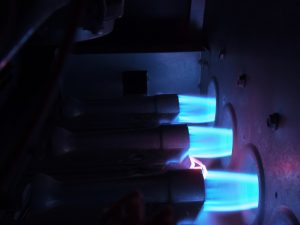If you think the most important thing a heating and cooling (HVAC) system can do is to provide an comfortable environment in your Cornelius home, you are right. But there is another thing an HVAC system does that is very important and it affects your entire family. It provides a safe indoor environment, too.
Besides warmth in the winter, a finely-tuned HVAC system can clean and filter the air you breathe. That’s important to people who suffer from allergies and is especially important for minimizing the spread of germs that cause colds and the flu. The key phrase in this paragraph is finely-tuned. If your HVAC system is not working correctly – out of tune – it can cost you a great deal in monthly utility bills and can be harmful to your health.
It is important for you and your family members to understand the basics of HVAC system maintenance so you can all understand the symptoms of improper maintenance and its consequences. For example, if anyone in your home is suffering from flu-like symptoms or are constantly drowsy or listless, they may be suffering from the a silent killer: poisonous carbon monoxide gas. This gas is formed during incomplete combustion of fossil oils like natural or propane gas. A malfunctioning furnace can emit carbon monoxide gases and you may never even realize it, until it is too late. Long-term exposure to the gas can cause brain damage and/or chronic sleepiness. It some cases, it can even cause death.
You may be able to diagnose the problem, but you aren’t qualified to test and repair a furnace that is creating deadly carbon monoxide gas. Your best bet is to call a qualified HVAC contractor who can diagnose the furnace and offer repair or replacement suggestions. But there are things you can do to prevent the build-up of carbon monoxide gas.
Check all exhaust vents, like chimneys and flues for any blockages. A blocked or partially blocked vent can cause the build-up of carbon monoxide gas. And never, EVER, use a gas or propane powered heater in an unvented area of your home. These types of heaters create various levels of carbon monoxide gas that needs to be circulated out of each room and replaced with clean, fresh air. So, your family can actively ensure that there is no debris, bird’s nests, animals, leaves, or snow in the ventilation system.
You can also “help” your HVAC system by keeping vents clean by vacuuming dirty vent grilles and, in general, keeping the home clean. The cleaner the home, the easier it is for your furnace to do its job and the easier it will be for you and your family will breathe. These are a few easy maintenance tips will keep you and your family warm – and safe – this fall and winter.
 Your mind has probably switched its focus from your air conditioner to your furnace. It makes sense as you are more likely to turn on your heater in the recent lower temperatures Oregon City has been experiencing since the arrival of the fall season.
Your mind has probably switched its focus from your air conditioner to your furnace. It makes sense as you are more likely to turn on your heater in the recent lower temperatures Oregon City has been experiencing since the arrival of the fall season.
 There are many different ways that a furnace can malfunction. But a furnace that fails to start is probably the easiest to understand.
There are many different ways that a furnace can malfunction. But a furnace that fails to start is probably the easiest to understand.
Join Us Online